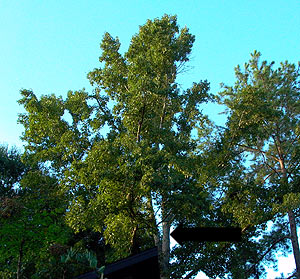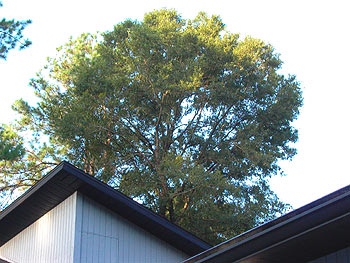Home > Storm damage prevention > What we learned > Preventive pruning
Preventive pruning reduces damage in storms

Pruning trees in an effort to minimize the impact of defects can reduce the likelihood of failure during storms. Research and observations in recent storms point to the importance of preventive pruning in preparing for the storm season.
Reducing the length of over-extened limbs and reducing the length of branches and stems with bark inclusions lessens the probability of branches breaking from the tree. Long limbs and codominant stems were reduced on this tree (pictured at right and below) about 6 months prior to 70 mph winds in hurricane Francis, 2004.
The tree came through the storm uninjured except for three small branches broken when an adjacent unpruned tree fell apart. The tree that fell apart had two codominant stems and bark inclusions. Note the dominant central leader in this well structured tree. Long limbs and codominant stems were also reduced in length on the laurel oak pictured below center. This tree came through the storm unharmed while many trees in the neighborhood broke apart and fell over.



